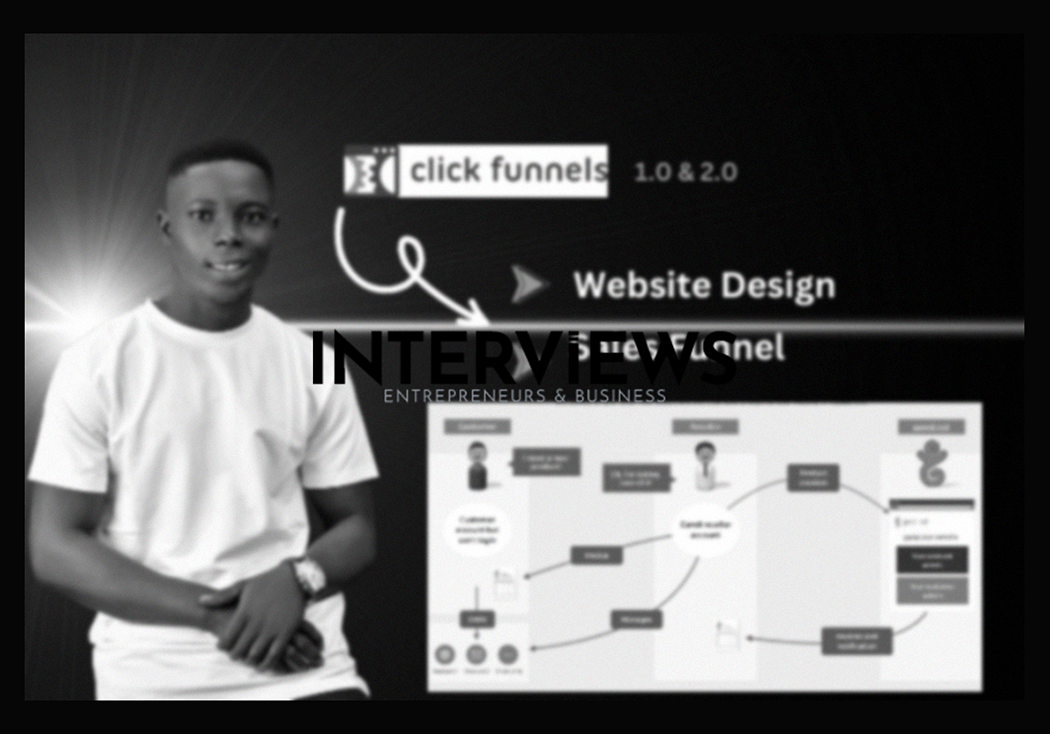ClickFunnels Review: Is This Funnel Builder the Real Deal or Just Another Shiny Object?
In the wild west of online business, you need tools that work. Enter ClickFunnels, a platform claiming to be your solution for sales funnels, marketing, and website building. But is ClickFunnels truly the oasis you’ve needed, or a mirage? Let’s dig deeper to see if it’s worth your time and money.
Unpacking the ClickFunnels Toolbox: What Can This Thing Actually Do?
What’s all the fuss about ClickFunnels? You hear ‘funnels’ often, but what does that mean? Imagine guiding someone through a journey. A website is like leaving them at a mall and saying, “Good luck!”. A funnel guides them step-by-step to a sale. Think of it as a yellow brick road to your checkout page.
ClickFunnels’ purpose is creating sales-optimized journeys. They help you build pages and funnels turning curious visitors into paying customers. Forget complex websites. ClickFunnels emphasizes targeted, conversion-driven designs. It’s like a Swiss Army knife for tasks that demand efficiency.
ClickFunnels evolved with their 2.0 version. They added website building to their capabilities. Yes, now you can create full sites with blogs and hubs. While sales funnels are still their core, they offer more options for online presence. That Swiss Army knife got additional, useful tools.
If you want to share knowledge and make money, ClickFunnels can help. They allow you to create, sell, market, and deliver online courses. This platform is becoming an ecosystem, not just a one-trick pony.
Sales Funnels: The Secret Sauce of Online Conversion
Focusing on sales funnels, what is this sequence? A sales funnel is a series of steps guiding someone from awareness to purchase. It’s a dance leading prospects to say “yes” to your offer.
This can take various forms. It may include web pages designed to achieve goals: capturing info, presenting offers, and closing deals. It can also involve emails, triggered actions, or notifications to lead your prospects through sales. A click funnel is a strategy to move someone from “Who are you?” to “Take my money!”
Are these funnels effective? Absolutely. Sales funnels are powerful in turning leads into customers. They are focused and persuasive. Instead of overwhelming visitors with info, they simplify the buying journey. It’s the scenic route, leading customers pleasantly to purchase, while traditional sites can feel chaotic.
ClickFunnels vs. Websites: Apples and Oranges or a Fruit Salad?
A popular question arises: “Can ClickFunnels replace my website?” The answer is: “Depends on your goals.” ClickFunnels excels as a funnel builder. While it now offers website capabilities, its strength lies in creating conversion-optimized funnels. Think of it as a scalpel for specific tasks versus a Swiss Army knife.
The difference is focus. A website serves as a broad information resource for visitors, emphasizing exploration. A sales funnel is specific, focusing on a single action: a purchase. It’s like a museum (website) versus a guided tour (sales funnel). They serve different purposes.
So, can ClickFunnels replace an entire website? Likely not totally or ideally. Your website can attract visitors with content and brand presence. Sales funnels convert those visitors into customers. They work together, like a team. A website to attract and funnels to convert, making a powerful duo.
However, with ClickFunnels 2.0’s Site app, the lines blur. You can create a website within ClickFunnels. For some businesses, especially direct sales ones, ClickFunnels might cover both needs. Yet for those needing content-heavy sites with complex structures, a dedicated platform may still be better.
What Treasures Can You Sell Through ClickFunnels?
So, what can you sell using ClickFunnels? Quite a lot! From digital products to physical items, courses, memberships, and services, ClickFunnels supports many transactions. Let’s discuss proven winners!
Interestingly, some top-sellers in the ClickFunnels ecosystem are products about ClickFunnels itself! Users are often entrepreneurs seeking to improve online sales. Thus, resources and tools for success with funnels are in demand. Here are top-selling products by ClickFunnels co-founder Russell Brunson:
- DotCom Secrets Book by Russell Brunson: A guide on online marketing and sales funnels.
- Expert Secrets Book by Russell Brunson: Focuses on authority and niche expertise.
- One Funnel Away Challenge by Russell Brunson: A training program for building effective funnels.
- Traffic Secrets Book by Russell Brunson: Strategies for increasing traffic to funnels.
- Funnel Scripts by Russell Brunson and Jim Edwards: Software for writing effective sales copy.
- 10X Secrets Masterclass by Russell Brunson: Advanced training on sales strategies.
These examples highlight a key point: information products tied to online business are popular in the ClickFunnels world. But it extends beyond that. You can sell physical goods, e-commerce items, coaching services, and just about anything else online. The focus is using funnels to create targeted offers and guide prospects towards purchases.
Crafting Your Conversion Machine: Building a Sales Funnel in ClickFunnels
You’re now convinced about the power of funnels. ClickFunnels seems like the tool to create them. But where to start? Building a funnel might seem daunting if new to it, but it doesn’t need to be hard. Let’s break down the steps to
get you started on your funnel-building journey.
Define when a lead becomes a prospect. This improves clarity and tracking. Not everyone entering your funnel will buy. Some browse casually. Others show real interest. Setting a definition of when a lead qualifies as a prospect helps focus efforts on those likely to convert.
For instance, a lead might become a prospect after downloading a resource, requesting a demo, or engaging with your content. Defining this point lets you segment your audience. You can tailor messaging. It’s like knowing when to shift from small talk to a serious pitch. Timing matters.
Building a sales funnel involves mapping the customer journey. You’ll also create necessary pages, such as landing pages, sales pages, order forms, and thank you pages. Writing compelling copy and designing appealing layouts are key. ClickFunnels offers templates and a drag-and-drop interface to ease the process, but understanding the strategy is crucial.
The Price Tag: Is ClickFunnels Worth the Investment?
Now, how much does ClickFunnels cost? ClickFunnels uses a subscription model. You pay a recurring fee to access the software. They have multiple pricing plans for different needs and budgets. In 2024, the main plans are:
- Startup Plan: About $97 monthly or $970 yearly for annual billing. This is the entry-level plan for those new to funnels.
- Pro Plan: About $297 monthly or $2970 annually. This plan includes more features for growing businesses.
- Funnel Hacker Plan: Pricing and features vary. This plan suits advanced users and agencies.
Check their official site for updated pricing. Plans usually have different limits on funnels, pages, domains, and other features. Choose the right plan based on your business stage, anticipated usage, and budget.
Hidden Costs? Transaction Fees and the Fine Print
Another detail to consider is transaction fees. In addition to your ClickFunnels subscription, there are extra costs. Payment gateways like Stripe or PayPal charge standard processing fees alongside ClickFunnels’ potential fees on sales. This can cut into your profits, especially at higher sales volumes.
Historically, ClickFunnels charged 4.9% on sales through their platform. Verify their current fee structure, as pricing may change over time. Include these potential transaction fees in your calculations when assessing overall costs and comparing it to alternatives.
You’ll also deal with standard credit card processing fees from processors like Stripe or PayPal. Typically, these fees involve a transaction percentage plus a small fixed fee per sale, for example, 2.9% plus $0.30 per transaction in the US. These fees apply whether you use ClickFunnels or another e-commerce platform.
When budgeting for ClickFunnels, consider not just the subscription cost but also potential transaction and credit card fees. This is essential for understanding the real cost of using the platform.
Beyond ClickFunnels: Exploring the Alternatives in the Funnel-verse
ClickFunnels is prominent in the funnel space but not the only option. Many tools offer similar features with different strengths and price points. When searching for tools, check alternatives to ensure the best fit for your needs.
A variety of ClickFunnels alternatives exist, each with unique aspects in funnel building and marketing. Some well-known options include:
- Leadpages: Known for landing pages focused on lead generation.
- GetResponse: Provides email marketing and automation alongside funnel-building.
- Instapage: Focused on landing pages with advanced optimization capabilities.
- Unbounce: Strong contender for landing pages and conversion optimization.
- Kartra: An all-in-one marketing platform akin to ClickFunnels.
- Systeme.io: Budget-friendly all-in-one marketing platform with funnel-building.
- OptimizePress: A WordPress plugin for marketing pages and funnels within WordPress.
- Kajabi: Specializes in online courses and digital products with marketing tools.
Each platform has strengths and might suit your needs better depending on specific requirements. For more options, check out this article on ClickFunnels alternatives, which offers insights into various tools.
ClickFunnels vs. Shopify: E-commerce Showdown
Now, let’s look at ClickFunnels versus Shopify. Both are leaders in online business but serve different primary needs. Shopify specializes in e-commerce, designed for creating and managing online stores. ClickFunnels focuses on funnels but includes website capabilities too.
Your choice between Shopify and ClickFunnels hinges on your main business goal. If you aim to build an extensive online store with various products, catalogs, inventory management, and e-commerce features, Shopify is your go-to platform. It’s built primarily for e-commerce businesses.
If direct response marketing, sales funnels, and guiding buyers through purchase paths are crucial for your business, ClickFunnels aligns better with your needs. It excels at creating targeted, conversion-optimized funnels focused on specific products or offers. Think of Shopify as a complete department store; ClickFunnels excels at creating effective pop-up shops.
You can use both platforms together. Some businesses operate Shopify for their main online store while using ClickFunnels for specialized sales funnels promoting specific products or campaigns. This combines the strengths of both platforms to enhance online sales strategy.
Shopify vs. Etsy: Marketplace Mania
Now let’s discuss Etsy as an alternative platform for selling online. Etsy is a marketplace focused on handmade, vintage items, and craft supplies. Its model differs significantly from Shopify or ClickFunnels.
The key difference lies in audience engagement. Etsy provides a built-in audience actively seeking unique products. Shopify requires you to generate traffic for your store independently. Etsy enhances visibility in its marketplace; Shopify gives branding control, yet you are responsible for attracting customers.
Concerning fees, Etsy charges listing and transaction fees while Shopify charges primarily through subscription fees with optional transaction fees based on payment gateways. Etsy can be an excellent option for artisans wanting to enter an existing marketplace, while Shopify suits businesses looking to build their own brand independently.
WordPress vs. ClickFunnels: Flexibility vs. Simplicity
A common comparison involves WordPress versus ClickFunnels. WordPress dominates content management systems (CMS), powering a significant portion of the internet. It provides flexibility but can be harder to learn than ClickFunnels.
If you require extensive flexibility and control over your website, especially with content marketing and SEO in mind,
WordPress is a popular choice. It’s open-source. There are many themes and plugins. You can build almost any website.
ClickFunnels focuses on simplicity and ease of use. It’s great for sales funnels and marketing pages. Its drag-and-drop interface and templates make funnel building quick and easy. Beginners can start fast. However, this limits flexibility compared to WordPress.
If you want a simple platform for sales funnels, ClickFunnels is a good choice. It can save time. WordPress offers more flexibility and customization. If you can handle a learning curve, WordPress is powerful long-term. You can use ClickFunnels with WordPress, too.
Kajabi vs. ClickFunnels: The Course Creator’s Conundrum
Selling online courses often means choosing between Kajabi and ClickFunnels. Kajabi is for creating and selling digital products. It’s an all-in-one solution for online courses and coaching programs.
Kajabi excels in digital content delivery. It manages courses, video lessons, and community features well. It creates a seamless learning experience. ClickFunnels offers course creation but focuses more on marketing. It’s good for building funnels to sell courses.
If your main goal is a digital education business, Kajabi is a strong fit. For broader marketing and sales funnels, ClickFunnels might work. If courses are just one of many offerings, ClickFunnels could be suitable.
Becoming a ClickFunnels Affiliate: Turning Referrals into Revenue
Using ClickFunnels for your business is great. But you can also become an affiliate. ClickFunnels has an affiliate program. You earn commissions for referring new customers. It’s a way to generate income by promoting a trusted tool.
Show Me the Money: Earning Potential as a ClickFunnels Affiliate
Can you make money as a ClickFunnels affiliate? Yes, you can. ClickFunnels has a lucrative affiliate program. Many marketers have substantial income streams through this program. Your earning potential depends on marketing efforts, audience size, and referral ability. The program rewards well.
The main draw of ClickFunnels’ affiliate program is the 30% recurring commission. You earn this for every person who signs up through your link. As long as your referrals stay customers, you earn commissions monthly. This model builds stable affiliate income.
Results vary, but some internet marketers earn $4,000 monthly or more from ClickFunnels. These affiliates have large audiences and marketing setups. New marketers can also earn a meaningful income with consistent effort and smart promotions.
Affiliate Program Nuts and Bolts: How It Works
Let’s look at the ClickFunnels affiliate program details. The core commission rate is 30% recurring. This rate is competitive in SaaS affiliate marketing, and recurring commissions are valuable.
ClickFunnels uses Tipalti for payouts. This payment platform offers various payment methods. It ensures reliable commission payments. For payment details, check the official ClickFunnels affiliate program documentation.
Becoming an affiliate is straightforward. If you’re a ClickFunnels 2.0 customer, you may be auto-enrolled as an affiliate. Otherwise, you can sign up through their affiliate page. You don’t need an active account to promote ClickFunnels.
For more information, explore the official affiliate program blog. It has guidance for aspiring affiliates.
Ease of Use: Navigating the ClickFunnels Interface
Usability matters when choosing software, and ClickFunnels is no different. How easy is it for beginners? Generally, ClickFunnels aims for user-friendliness. However, there’s a learning curve, especially for sales funnels.
The Learning Curve: Funnel Building for Newbies
If you’re new to sales funnels, the learning curve can be steep. You need to understand funnels, the customer journey, and offer structure. While templates and a drag-and-drop interface help, mastering funnel building takes time.
ClickFunnels has two main editors: the page editor and the workflow editor. The page editor designs landing and sales pages. It is intuitive and user-friendly. You can easily add elements and customize layouts without coding.
The workflow editor sets up complex funnels and automations. It can be less intuitive for beginners. You connect different steps, triggers, and actions. Though powerful, it requires more time to learn compared to the page editor. With practice and ClickFunnels training resources, most users can become proficient.
Limitations and Potential Pitfalls: The Not-So-Rosy Side of ClickFunnels
No platform is perfect. ClickFunnels has limitations and drawbacks. Be aware of these before choosing it as your tool.
Page Speed Pains: Slow Loading and Conversion Killers
A significant complaint about ClickFunnels, especially older versions, is page speed. Slow loading times can kill conversions. Studies show conversion rates drop 20% per second for slow pages. Users expect page load speed to be quick.
Some testers report slow load times of 9 seconds or more. This can hurt user experience and conversion rates. ClickFunnels has worked on speed improvement in newer versions, but it’s still a consideration.
HIPAA Compliance: A Healthcare Hurdle?
For healthcare businesses, HIPAA compliance matters. HIPAA protects patient health information. Can you use ClickFunnels in a HIPAA-compliant way?
The answer is generally yes. ClickFunnels can be used for lead generation and selling health products. Many healthcare professionals use it. However, you must ensure your ClickFunnels setup follows HIPAA regulations.
Selling Products and Courses: Monetizing Your Expertise
ClickFunnels isn’t just about lead generation;
It’s a platform for selling products and courses to your audience. Whether you sell digital downloads, physical goods, or online courses, ClickFunnels provides tools for these transactions within your funnels.
Digital Product Paradise: Setting Up Your Online Storefront
Selling digital products on ClickFunnels is easy. The platform lets you create product listings in your account. Specify product details, pricing, and digital delivery options. You can integrate payment gateways for transactions. Choose between physical or digital products, influencing settings and delivery.
Once a product is ready, add it to your sales funnels. This can include order forms on funnel pages where customers buy the product. ClickFunnels manages order processing and payment collection. For digital goods, it delivers the product to the buyer. This creates a seamless system for selling digital products.
Course Creation Central: Building and Delivering Your Online Academy
ClickFunnels 2.0 expands its features to include course creation. You can create, market, and deliver courses within ClickFunnels. This serves as an all-in-one solution for course creators managing both marketing and delivery of online education.
It offers course templates and a customer center where students access purchased courses. The platform helps you structure content into modules and lessons, upload videos, and manage student access. Users can access courses through the customer center after purchase, creating a centralized learning space.
Regarding profitability, selling online courses can be lucrative. Earnings vary widely, from $0 to over $50,000 monthly. Factors include course topic, marketing, pricing, and audience size. Industry averages suggest successful creators earn between $1,000 and $10,000 a month, highlighting potential for sustainable income.
Behind the Scenes: ClickFunnels Company Info and Tech Specs
Now, let’s look at some company information and technical details of ClickFunnels.
The Masterminds: Founders and Founding Year
ClickFunnels was co-founded by Russell Brunson and Todd Dickerson. Russell is a public face known for marketing and sales funnel books. Todd is the technical co-founder. ClickFunnels started in 2014 from their frustrations with existing tools and complexity in building effective sales funnels.
Who’s Using ClickFunnels? Company Clientele
Many businesses across various industries use ClickFunnels. From small startups to larger companies, it serves diverse users. Examples include Anderson Advisors, Mawer Capital, Grant Cardone Enterprises, and Igniting Souls. Its ability to create targeted funnels makes it valuable for conversion-driven marketing.
Technical Deep Dive: Domains, Hosting, and Payments
ClickFunnels offers several important features:
- Domain Names: Use custom domain names for your funnels. Connect existing domains or purchase new ones through the platform. The number of domains depends on your subscription plan; basic plans might allow 3 custom domains.
- Hosting: ClickFunnels includes hosting for all pages within your subscription. No need for separate hosting services, simplifying setup as ClickFunnels handles it.
- Payments: ClickFunnels processes payments through Payments AI, their in-house solution. Check if Payments AI suits your region and needs since options can vary.
Saying Goodbye: Canceling Your ClickFunnels Subscription
You might not want to leave, but if needed, canceling your ClickFunnels subscription is straightforward. In your account settings, there’s an option to manage your subscription. Look for a “Cancel My Subscription” button.





